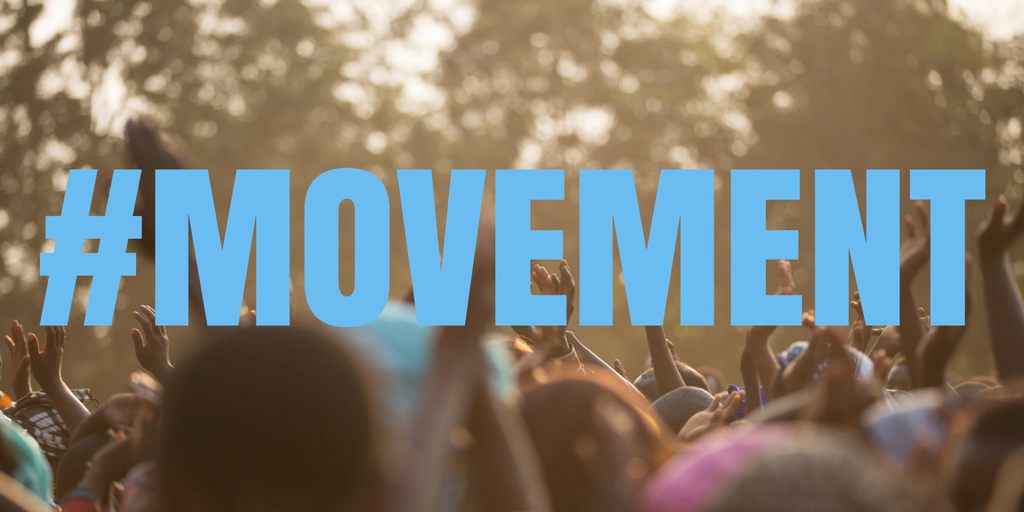As we continue to deepen our understanding of the Missional church, the next big idea that is flowing from this conversation is Movement.
Have you been in a conversation with someone about movement recently? If not, you will likely find yourself in conversation about this idea, as this word will be used more and more in public and private settings. From coffee shops to homes, and from the streets to the stage, movement is starting to live up to its name.
Maybe you have already started using the word yourself. You may be a part of a movement or seeking to start a movement. You have certainly heard about or participated in some social movement of some kind.
But what does it mean to understand the church as movement? My friend Dan and I unpack this in our recently released book The Church as Movement.
Did Jesus Fail in Church Planting 101?
If we look at the ministry of Jesus from the point of view of his focus and his fruit, it might seem unimpressive, at least at first glance. For after three-and-a-half years of ministry, the crowds that wanted to make him king began calling for his crucifixion. When it came to his disciples, Judas betrayed him, Peter denied him, and the rest of the disciples deserted him.
Although his resurrection brought eleven of his disciples back into the fold, several weeks after his resurrection there were only 120 faithful followers. At least that is how many were gathering in the Upper Room (Acts 1:14-15). By the standards of many church planting organizations today, Jesus would have been a failure at this point in his ministry.
I sometimes imagine what it would look like if Jesus were planting with a denomination or church planting organization in our day and had to fill out a monthly report. At the time of his crucifixion he would have to say, “My core team has deserted me, the crowds want to kill me, but I do think my mom is still on board.”
While his monthly report at this point in his ministry would look pretty dismal, what might his report look like a month later, after rising from the dead?
“Well, after dying on the cross, the Father raised me from the dead. I have met with the disciples, and eleven of the twelve are back in the fold. Thomas was difficult to get on board, but eventually I was able to convince him of my resurrection. I’m also glad to report that after taking the time to preach to hundreds of people in my new, resurrected body, we now have 120 people meeting up. They are meeting in the upper room for prayer—even as I’m filling out this report.”
I can imagine the conversation among the denomination executives.
Exec. 1: I would have thought that his resurrection would have brought more people out, but there are only 120 meeting with him.
Exec. 2: Yeah, the last time I met with Jesus I told him he should stop sharing so many confusing parables and be more clear when speaking to the crowds, but he didn’t seem to listen. If he would have spent more time working on his sermons and focusing on having an excellent large gathering and less time hanging out with his twelve friends at weddings and parties, he would have more people coming to his service after three-and-a-half years.
But God’s foolishness is wiser than our wisdom, and as far as the heavens are above the earth, God’s ways are above our ways. His approach is typically counterintuitive to ours. Although there are varying views on Jesus, those who have studied the life of Jesus have come to the common conclusions that Jesus’ main message was the kingdom of God and his primary way of creating movement was in the training of The Twelve.
Movement and Spaces
Jesus spoke to, healed and fed the crowds. He mobilized the seventy for mission. Discipleship took place with The Twelve, and he shared intimate experiences with The Three—James, Peter and John. Jesus understood what sociologists have been discovering in our day: we all have the need to belong to
– public space (70+ people)
– social space (20-50 people)
– personal space (8-12 people)
– intimate space (3-4 people)
Each of these spaces is designed to meet specific needs. We can’t get our intimate needs met in public space, and the best place to make disciples is not public space, but personal space. This is because people tend to do what we do, not what we say. Discipleship takes place through imitation, not information.
The Key to Movement
In my next post, you will learn the key to movement. Until then, get a free download and learn more about the book that goes into it all at churchasmovement.com.
Share this Post

